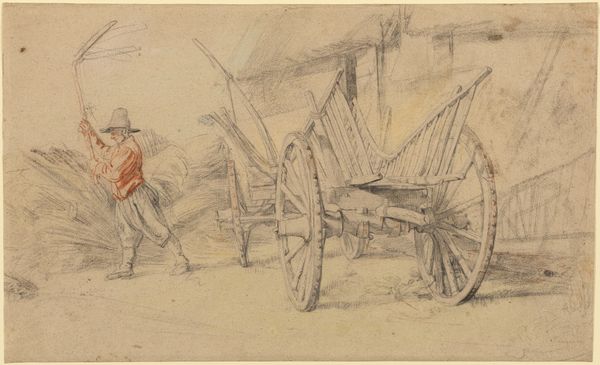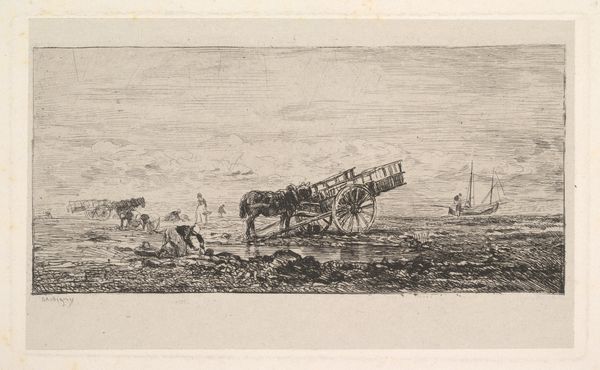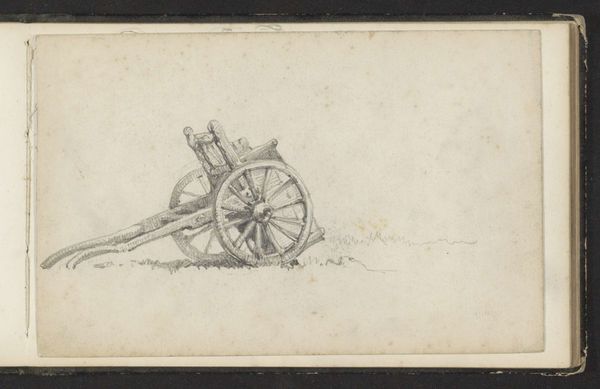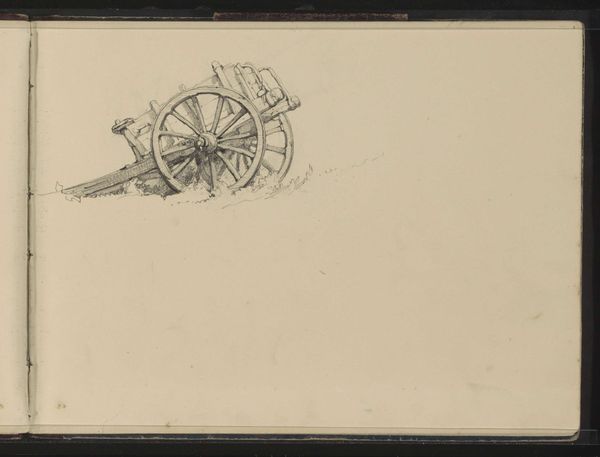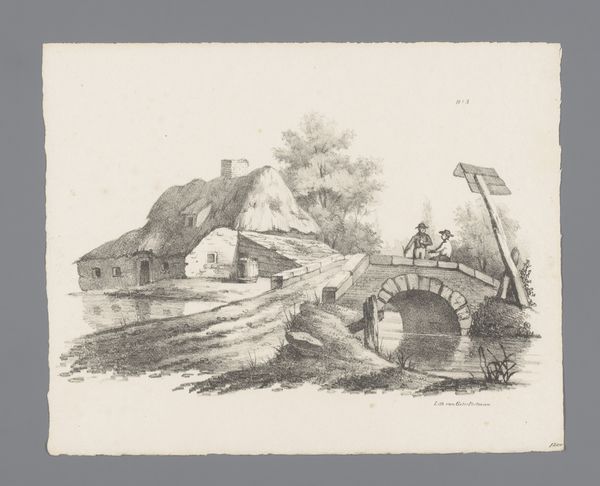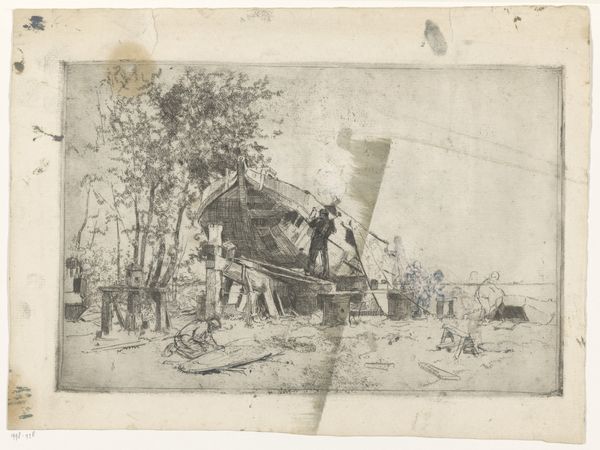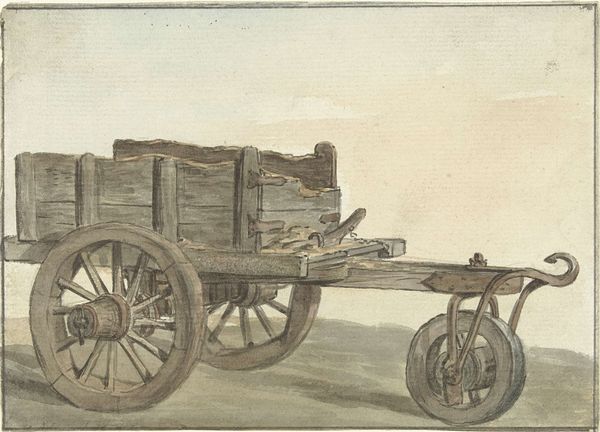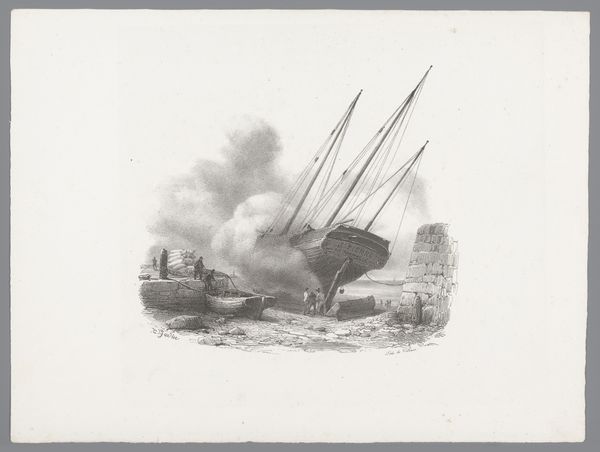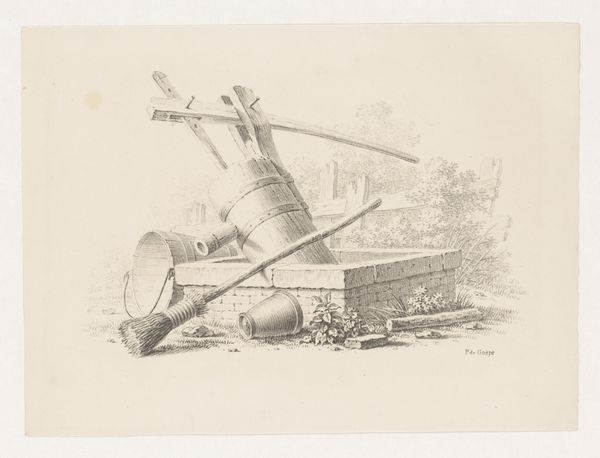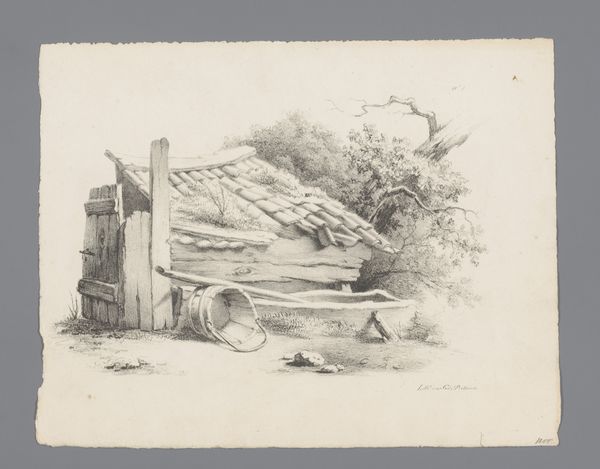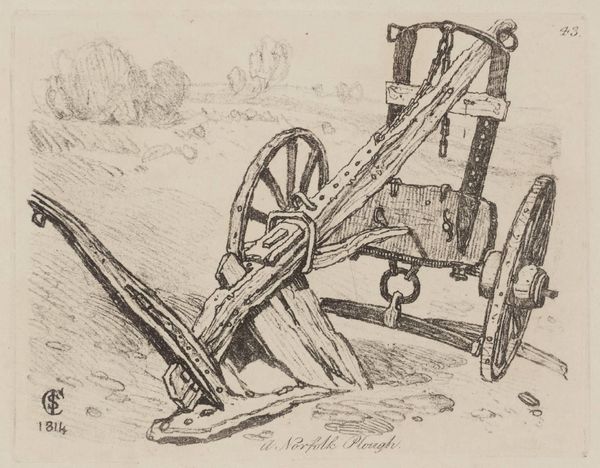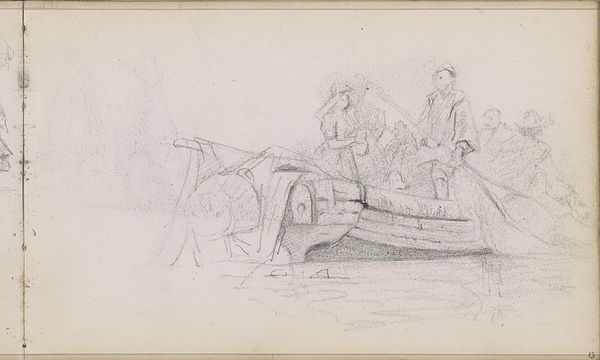
drawing, paper, pencil
#
drawing
#
landscape
#
paper
#
pencil
#
genre-painting
#
realism
Dimensions: height 164 mm, width 253 mm
Copyright: Rijks Museum: Open Domain
Editor: This pencil drawing, "Wagen met twee wielen," or "Two-wheeled cart," by Paulus Lauters, was created sometime between 1827 and 1851. It's incredibly detailed; the rough texture of the wood and the individual blades of grass give a realistic feel. What symbols or narratives do you find embedded in such a simple scene? Curator: The image is resonant precisely because of its perceived simplicity. Look closely. The cart itself, rendered with such attention, becomes an emblem of rural life, representing labor, sustenance, and the cyclical nature of existence. Note how it is positioned in front of nature, symbolizing man's taming and reliance upon nature's offerings. Editor: So, you're saying the cart is more than just a cart; it's a stand-in for an entire way of life? Curator: Precisely. Consider the placement of the shovel, nearly hidden. This, too, speaks to toil and connection to the earth, hinting at burial and fertility cycles. The genre painting captures the time by representing what the Dutch considered important about daily life. Do you see a link between the shape of the trees to the lines of the wooden wagon? Editor: That’s interesting! The trees almost echo the weathered wood and convey age, but their canopies seem to reach upwards in contrast with the horizontal stasis of the cart. They share the same weathered effect. Curator: This echoes the cyclical symbolism prevalent at that time in Dutch art. A return to symbolism in realism, reflecting a collective consciousness surrounding agrarian traditions. How does considering these elements affect your understanding of the drawing? Editor: It gives it a new depth. What I saw as a simple sketch is really layered with meaning about human work. I would not have observed that on my own. Curator: And it invites us to reflect on our relationship with these themes today. Consider this when studying artworks as memory symbols and memory triggers that create identity.
Comments
No comments
Be the first to comment and join the conversation on the ultimate creative platform.
